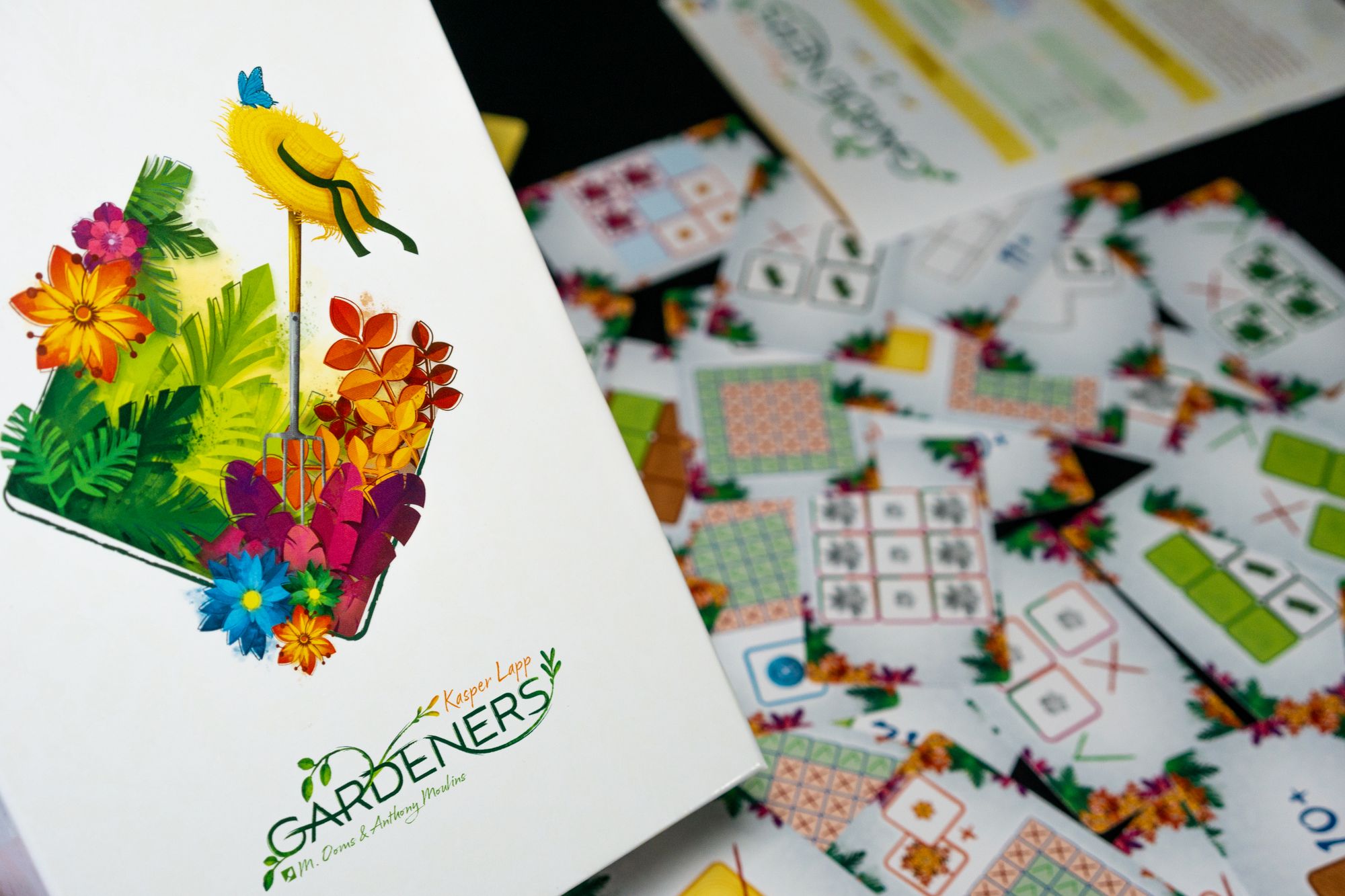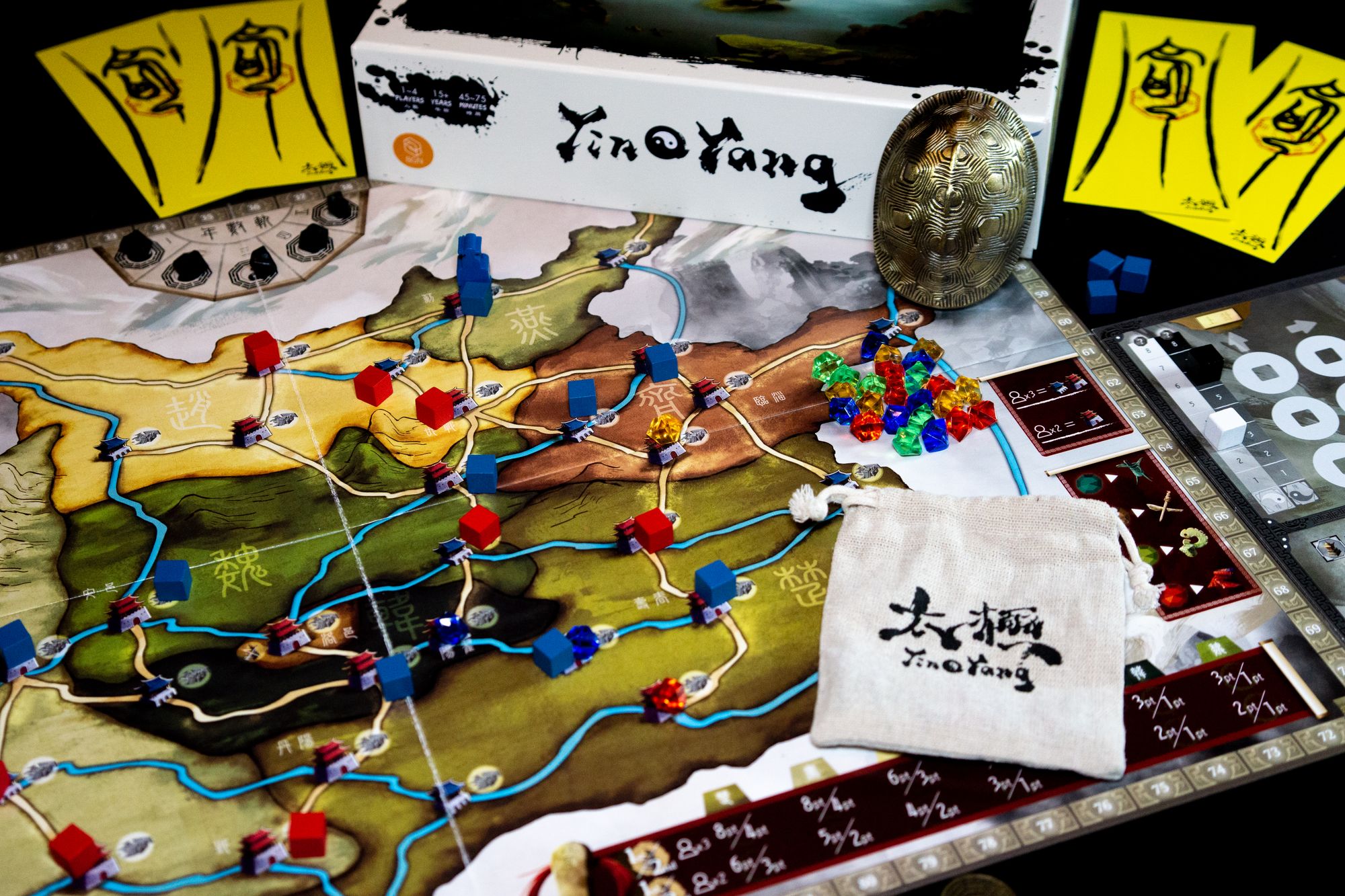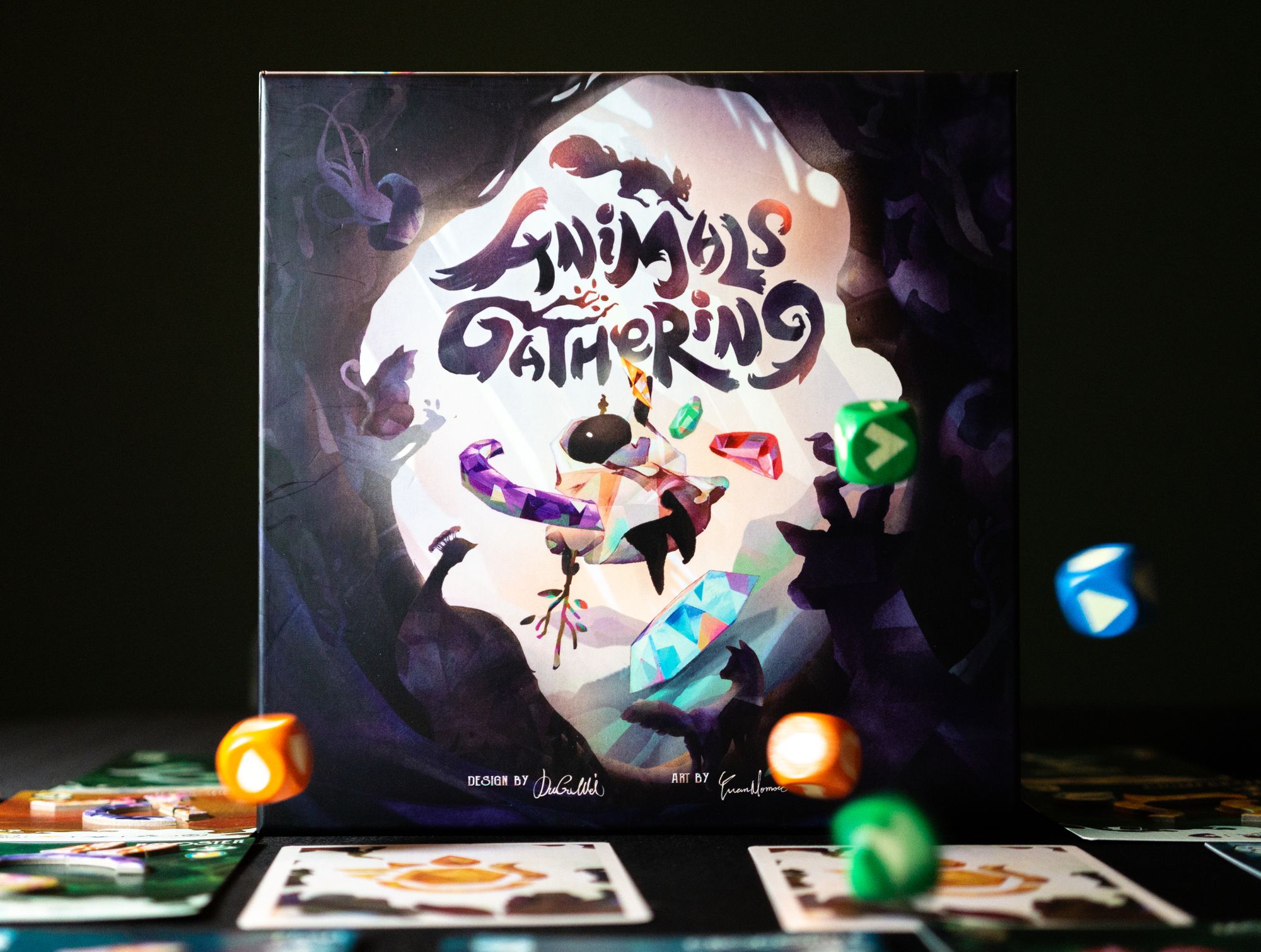Review: Endless Winter: Paleoamericans (+ All Expansions)
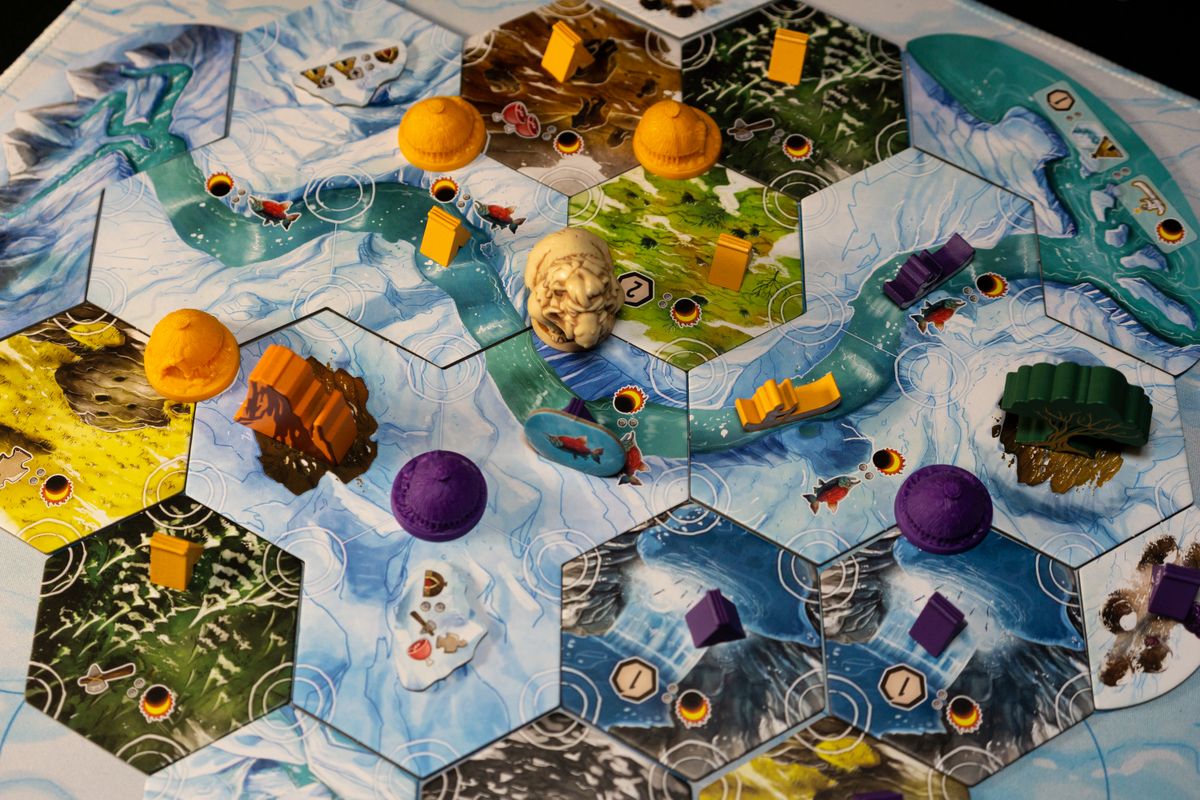
Settle new lands, grow your population, and build megaliths - in an endless winter.
Designed by Stan Kordonskiy and published by Fantasia Games
👤 1-4 players
🧩 Action Selection, Area Control, Deck Building, Set Collection
⚖️ Medium
Overview
Endless Winter: Paleoamericans takes place in North America around 10,000 BCE. Players guide the development of their tribes across several generations—from nomadic hunter-gatherers to prosperous tribal societies. Over the course of the game, tribes migrate and settle new lands, establish cultural traditions, hunt paleolithic megafauna, and build everlasting megalithic structures.
Endless Winter is a euro-style game that combines worker placement and deck building in an innovative way. Each round, players send their tribe members to various action spaces, and pay for the actions by playing cards and spending resources. Tribe cards grant additional labor, while Culture cards provide a variety of unique effects. As an alternative, cards can be saved for an end-of-round Eclipse phase, where they are simultaneously revealed to determine the new player order and trigger various bonus actions.
The game features a novel blend of interwoven systems and mechanisms, such as multi-use cards, area influence, tile placement, and set collection. Plus, there are many viable paths to victory. After four brisk rounds, scores are tallied, and the tribe with the most points wins!
—description from the publisher
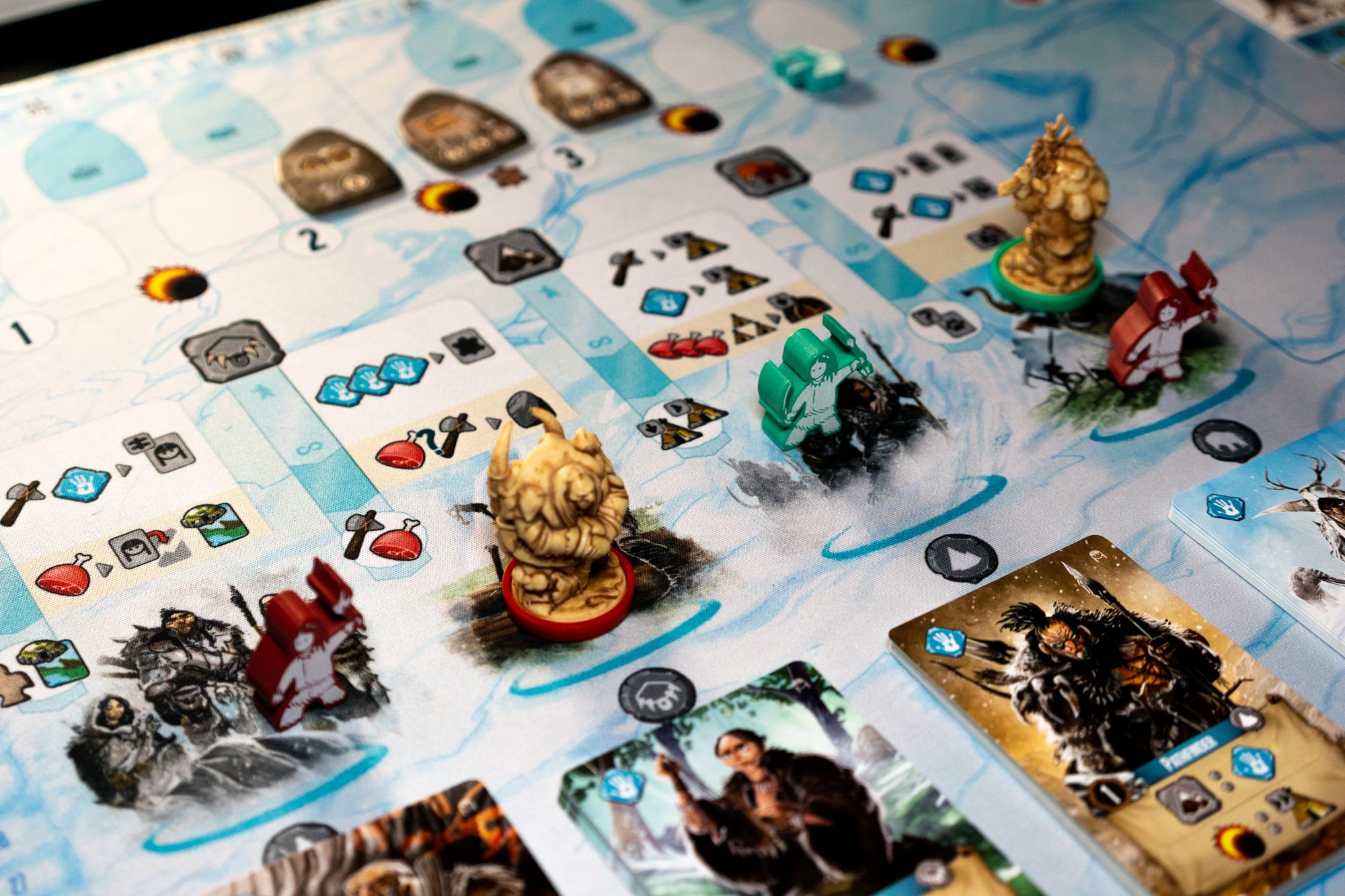
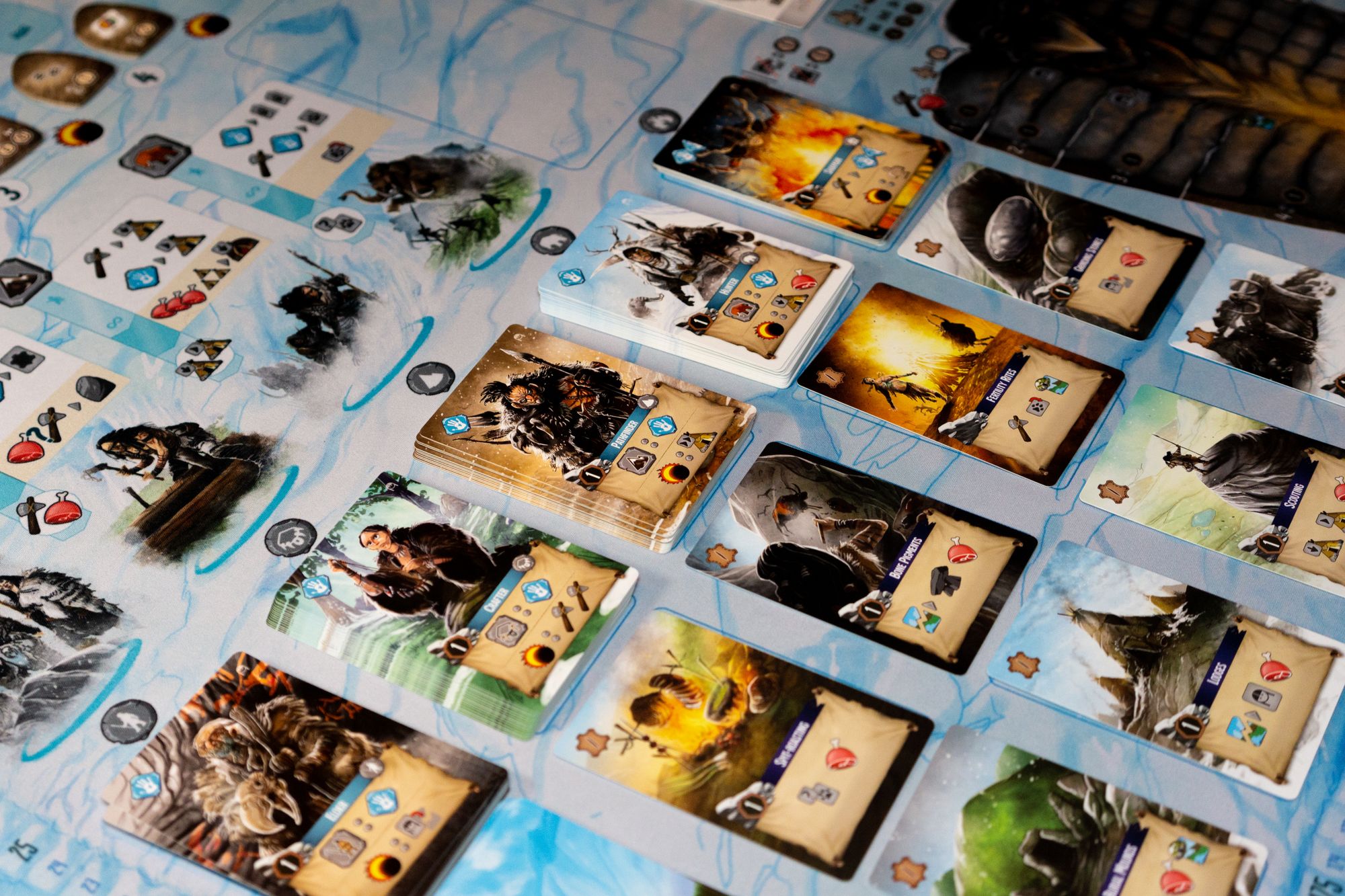
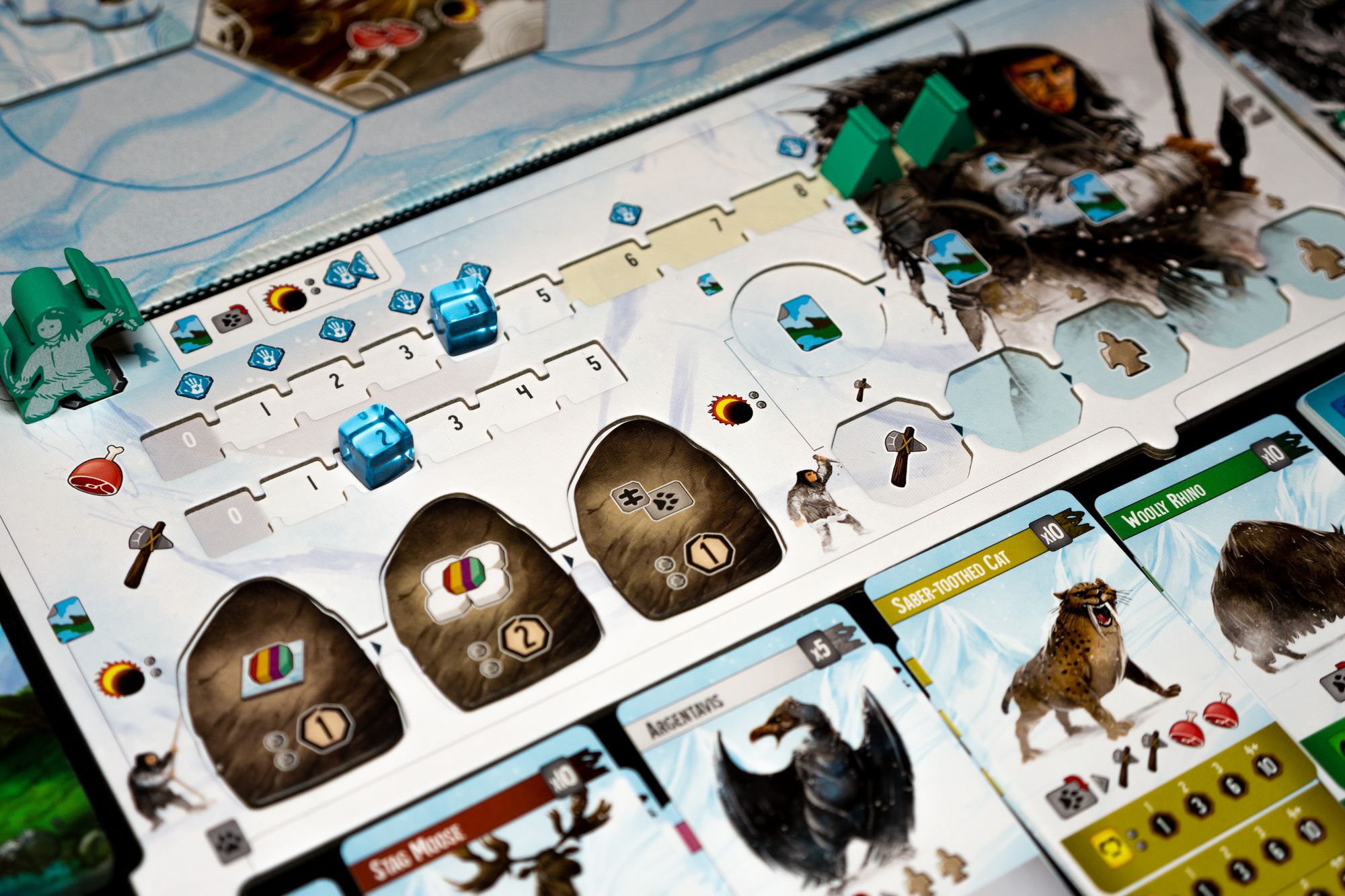
Gameplay
The game is played over four rounds, representing a generation. Each round is divided into 3 phases:
Action phase: In turn order, players take turns until all players have taken three turns. Each action phase is broken down into four steps. The first step is to play as many culture cards as you want from your hand. The next step is to place one of your figures onto one of the four action spaces. You then get to play tribe cards from your hand to boost that action. The first part of the action can be executed as many times as you can and want. The second part of the action can only be done once. And lastly, if you're the first player to visit that action space this round, you get an additional bonus. After the actions, you discard the cards you've used. If this was your third action phase this round, you now prepare your eclipse pile with leftover cards to use in the Eclipse Phase.
Eclipse Phase: First, the Turn order is adjusted based on the amount of labor the players have prepared in their eclipse pile. Following the new Turn Order, players gain points/income from the turn order track, eclipse pile cards, terrain they control, and their player board.
After the Eclipse Phase, you prepare the next round during the Preparation Phase. All figures are returned to their owners, card displays are replenished, and players refill their hands with cards from their deck.
After the 4th Eclipse phase, the game proceeds to Final Scoring. The player with the most points wins.
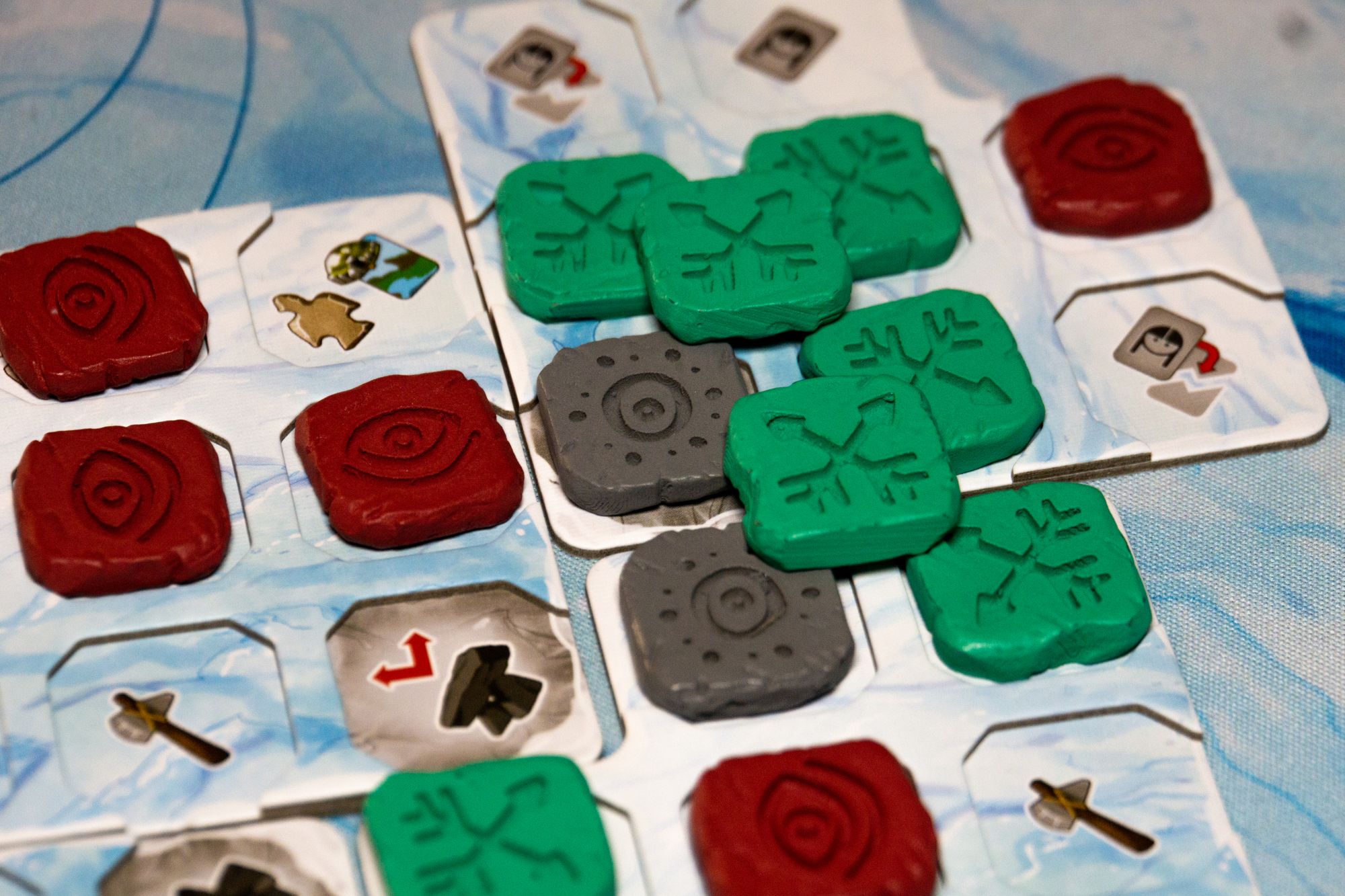
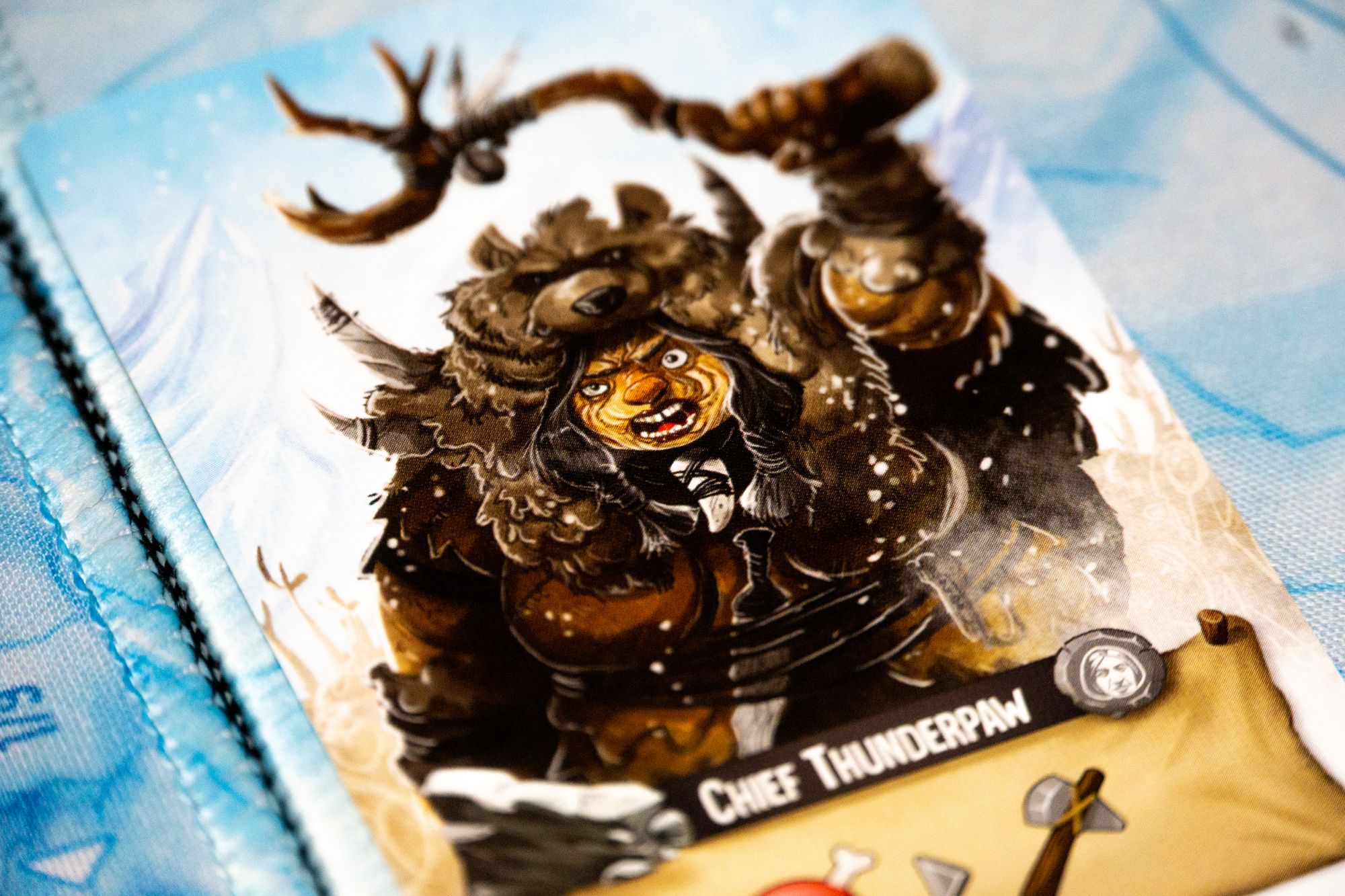
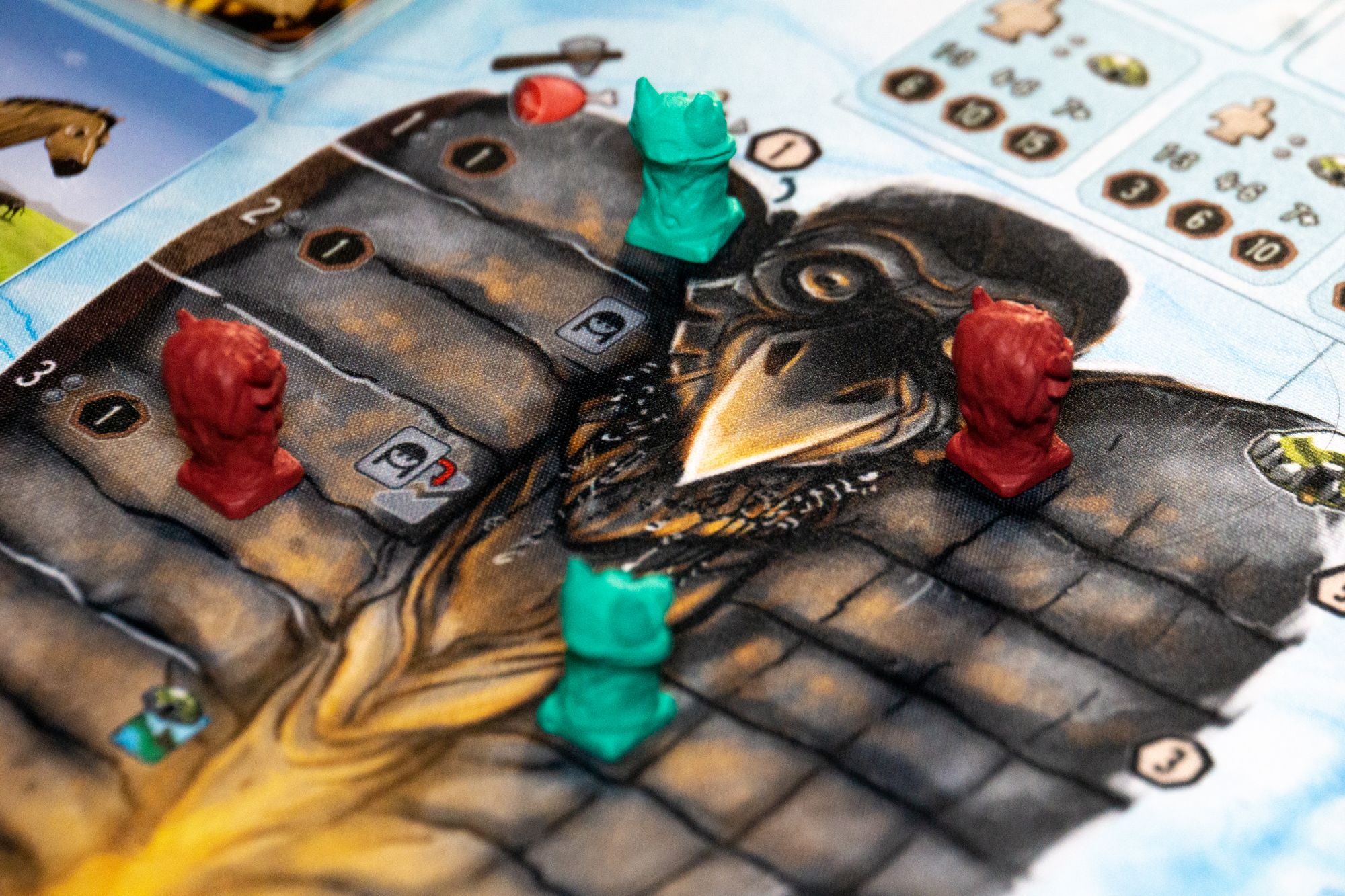
Art & Components
Endless Winter has a substantial table presence. We own a large table, but we can barely fit it with the playmats. The upside to this is that there is also a lot to look at, especially if a game is as stellar as Endless Winter in art and high-quality components.
The artwork in Endless Winter is once again from the fantastic @txemico. His signature art style shines, and you can see that Endless Winter was a passion project for both publisher and the artist. The amount of detail in the artwork on cards, boards, and other components are fantastic. I already liked The Mico's art style from some of his earlier games: West Kingdom and Claim series.
Both the retail and deluxe editions @fantasia_boardgames have really outdone themselves. It has highly detailed miniatures (in both editions!), dual-layered boards, colorful player pieces, and outstanding card stock. I also have the playmats and resin pieces upgrades that replace the boards and wooden pieces from the retail edition. This gives the game a beautiful look and a pleasant tactile feeling.
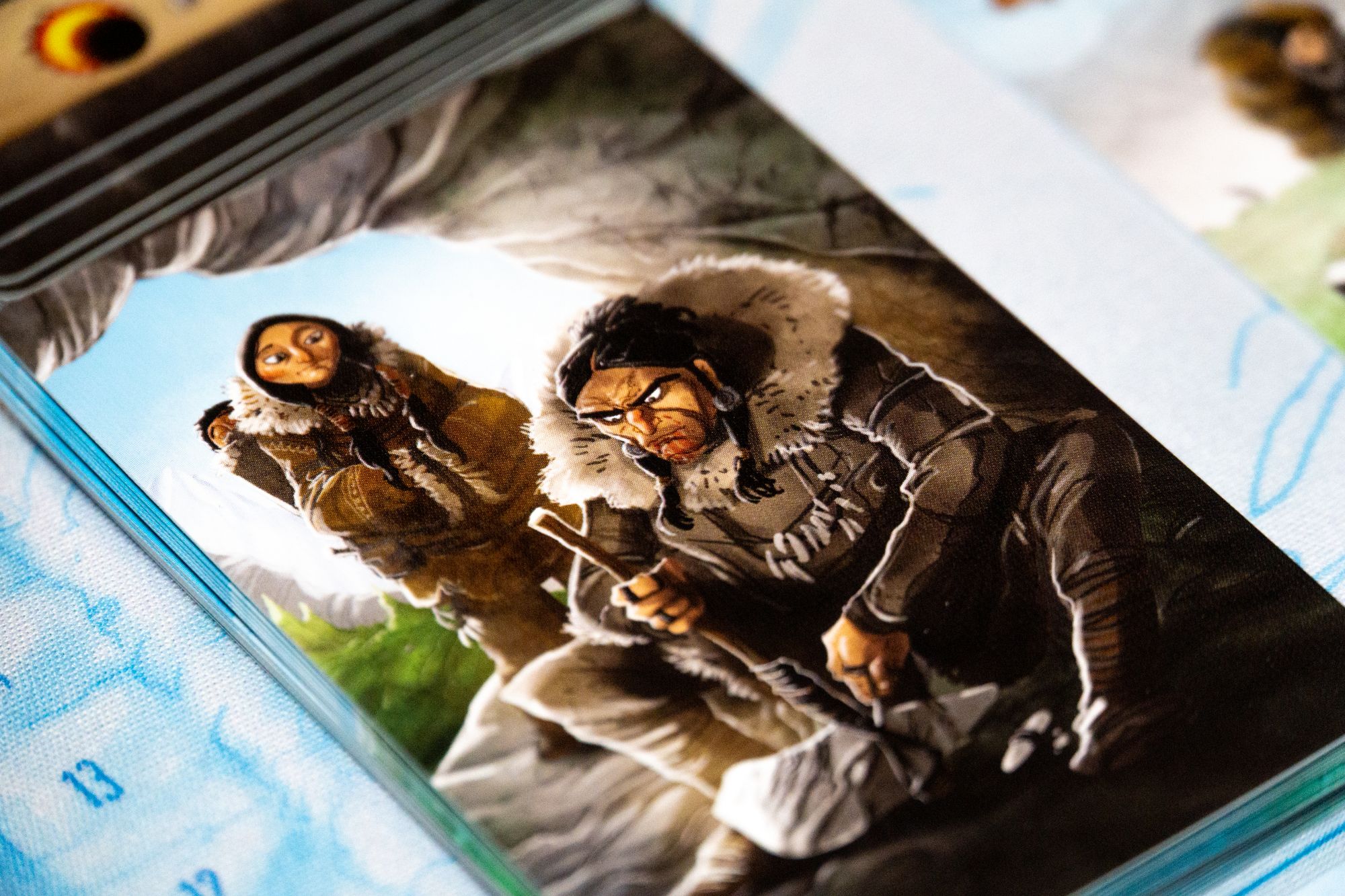
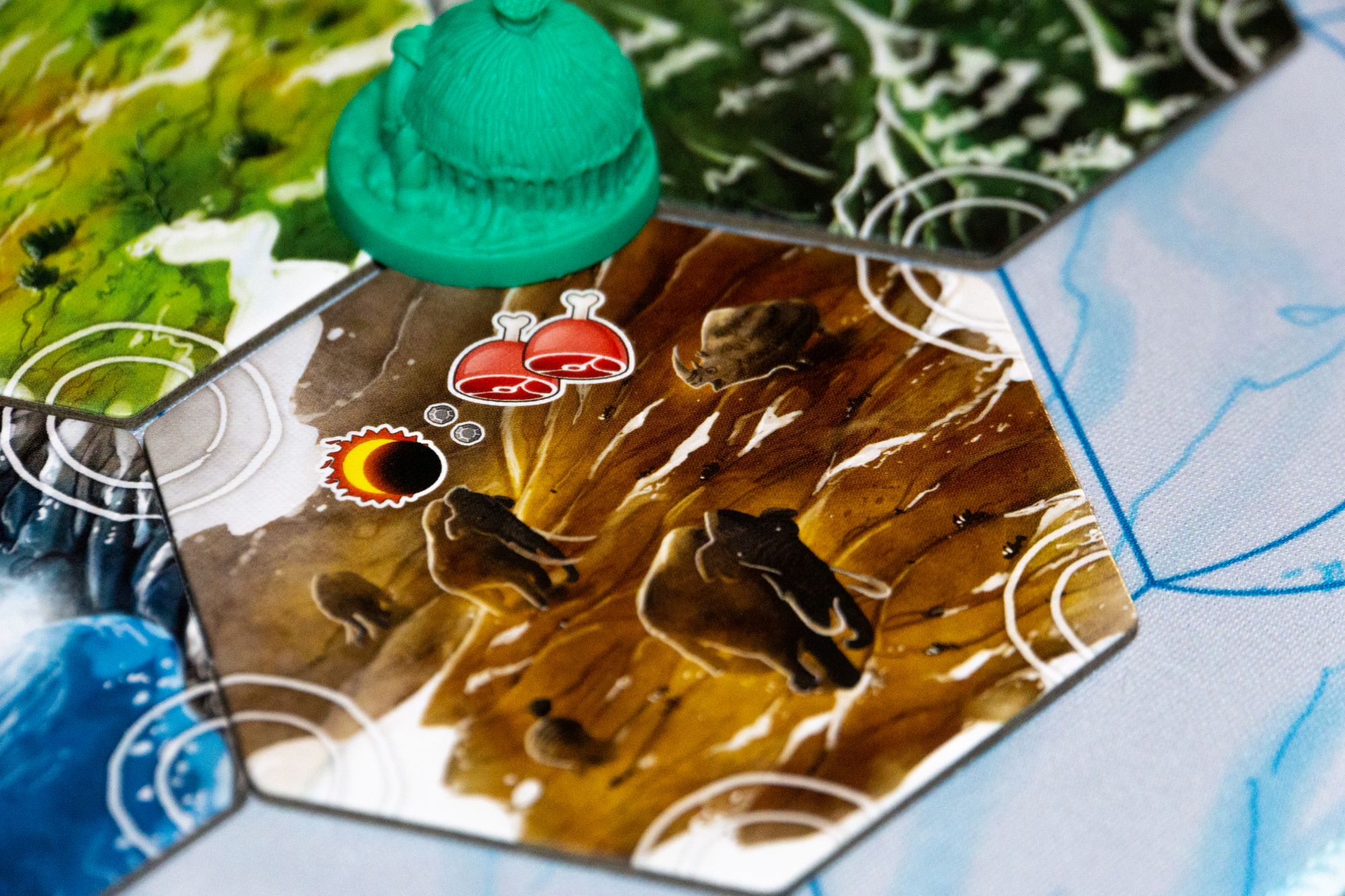
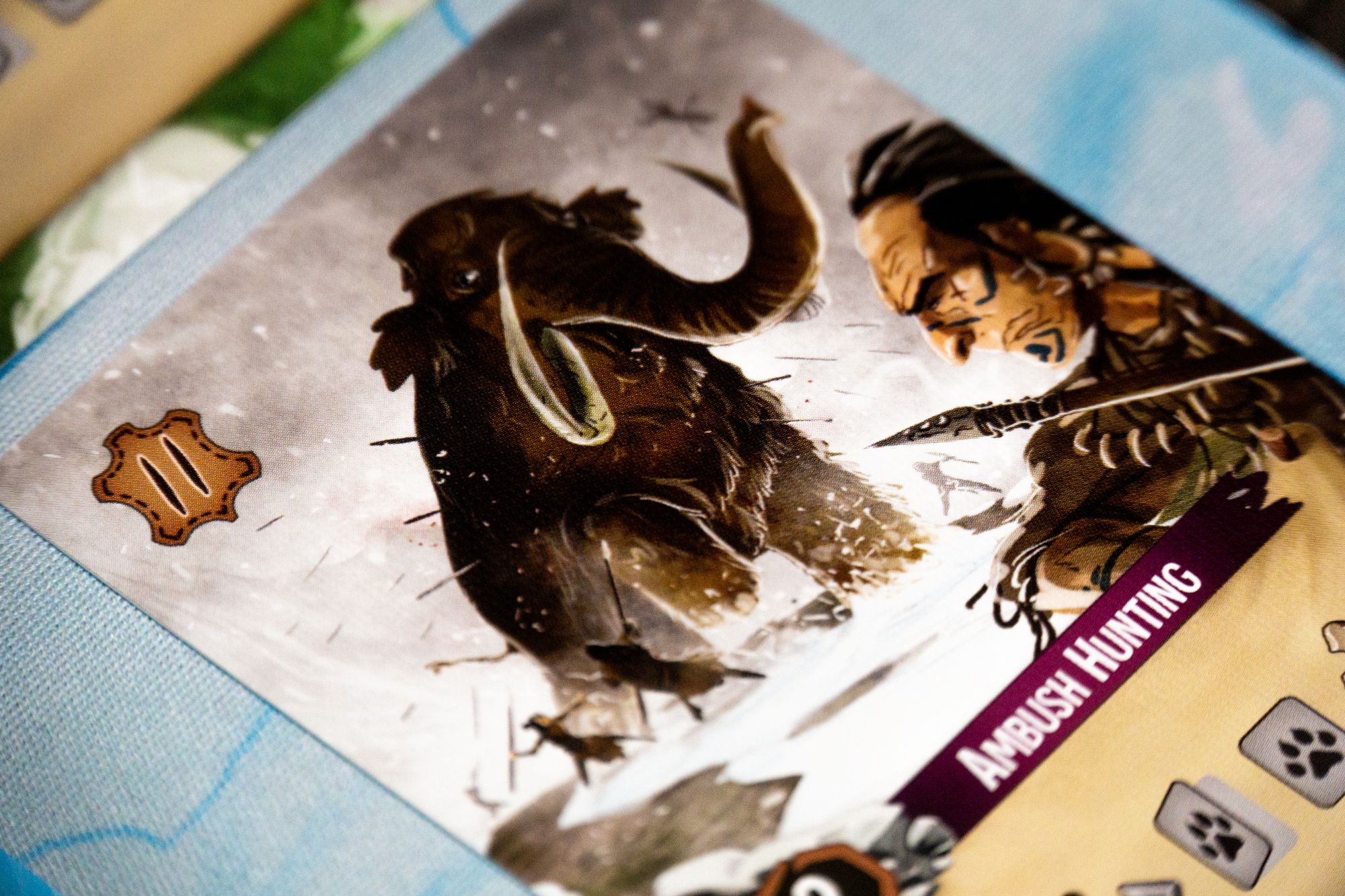
Thoughts
Let's talk about the base game first. I've already talked a bit about the art & components, but Fantasia Games have done a fantastic job with Endless Winter. This game has seen many upgrades through Kickstarter, and that makes the game shine. They didn't hold back those shiny components/upgrades just for the deluxe edition, as some of the best upgrades are also included in the base game. The Artwork from The Mico helps bring the theme to life. The Iconography is also perfect.
Endless Winter has mixed a whole bag of mechanics into a single game, and I was a bit worried at first if this wasn't too much. But once you play, you'll notice that all the mechanics are there for a reason and that they are all intertwined and have an essential part in the game. Unlike some Kickstarter games, you can feel that a lot of time went into playtesting this game of epic scale. Endless Winter is a grand experience; if playing it on a game night, it is probably an evening-filling event.
The thing I probably liked the most in Endless Winter was the combo tastic turns. Once you build your deck, you can generate fun combos that make you feel like you're on a roll. This especially shines in the second part of the game, as the first part can feel almost like you can't achieve anything. Playing culture cards that let you build monoliths, gain animals, and so on.
This also brings me to one of the downsides of playing Endless Winter, especially on higher player counts. The chaining of actions also introduces a lot of downtime, as turns can take quite a long. You'll especially start to notice this on higher play count, but it was also already apparent in our two-player games. The fact that there are also not many interactions makes your opponents tune out when you perform your sometimes long turns.
With all the different areas in the game, I expected I needed to focus on specific aspects and neglect other areas of the game. However, I've discovered that Endless Winter is a very open game; for me, it feels too loose. At the end of the game, you always have many animals, villages/camps, topped one of the idol tracks, a massive deck of cards, and many monoliths. Why would I pursue one strategy over the other if I get to do almost anything in a single game? This is a shame and makes me wonder how many times I want to play Endless Winter in the future.
With this open feel to the game, I need variability to change up each play; this is mainly done with some randomized set-up but nothing too game-changing. The real variability is only introduced in the expansions, and I think that is a missed opportunity as I believe the base game has a relatively short shelf life on its own.
Another gripe I have with the game is the immense table space required. There is the main board with various card displays and action spaces, the idol board, monolith board, terrain board, animal board, player boards, and more. We have a reasonably large table, but we already had trouble getting a good set-up where everything was readable for two players, let alone if playing with 4. Luckily the boards (we used the playmats) are all separated so that you can arrange the boards to your liking and table space.
Before our last plays, we already detested the prospect of setting up this huge game. The set-up instructions are relatively long (a summary is available on BGG, luckily), and it's just a lot to arrange before you can get going. The much-needed variability comes from the expansions; however, those expansions sometimes add elements that need to be swapped in favor of other components. So you'll have to sort through that whole animal deck again; yet again, this might look like something small, but it will significantly impact the number of times we will play Endless Winter.
All in all, Endless Winter has brought me some perspective. I think I would rather have a base game with enough variability to enjoy over and over than a Kickstarter game with multiple expansions/modules out of the gate that take up a lot of space and time to learn & set up.
👍 Fantastic production and artwork
👍 Intertwined mechanics that are well integrated
👍 Game of epic scale
👍 Combotastic turns
➖ Long turns, lots of downtime
➖ Game feels too open for my taste
➖ Variability must come from expansions
➖ Table hog
➖ Set-up & tear-down time is too long
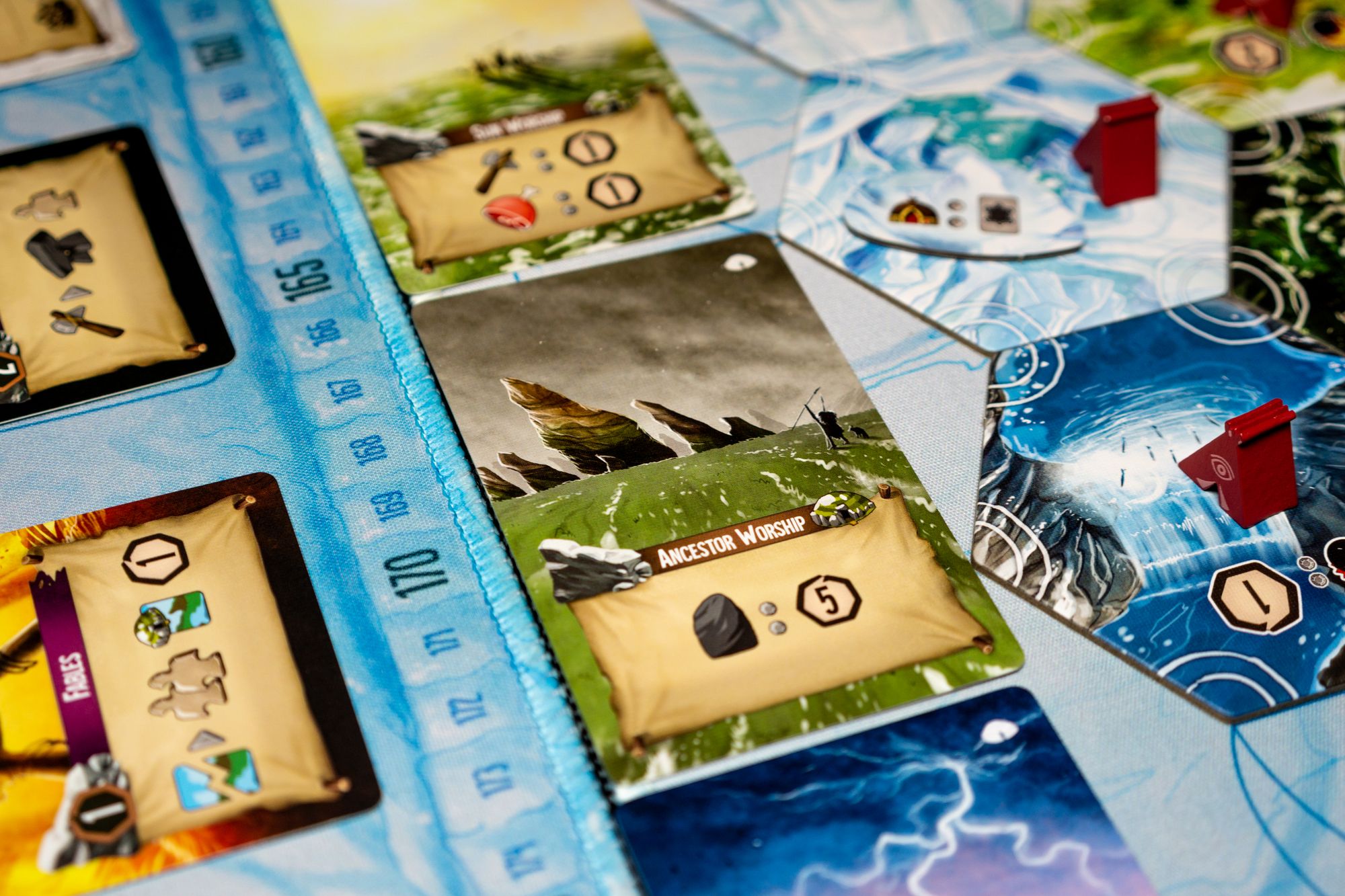
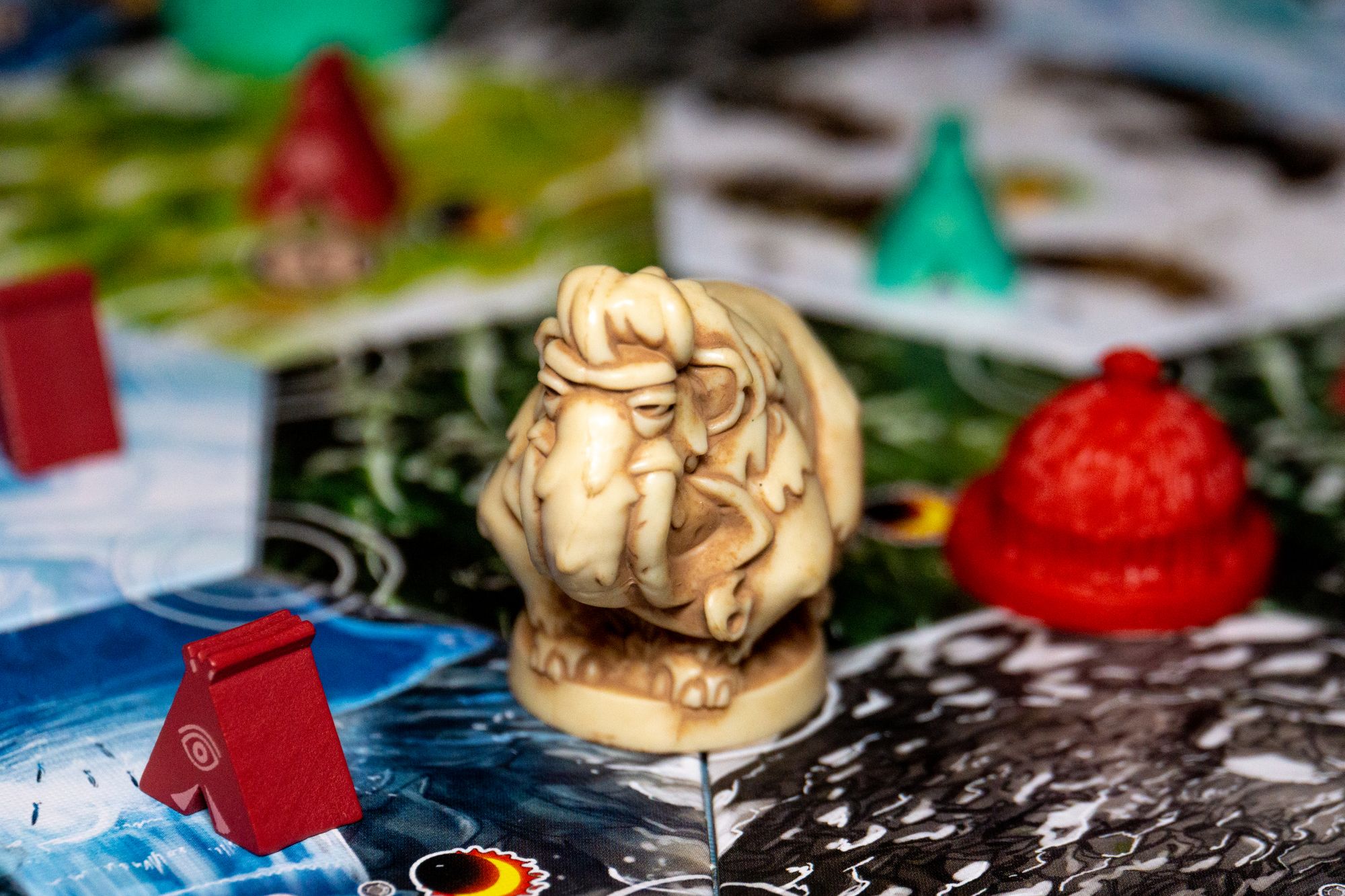
Modules & Ancestors Expansion
The base game comes with two optional modules, Glacier Tokens & Rest Tokens. The first module adds tokens to the glacier tiles; each time you build a village adjacent to these tokens, you get a bonus. Rest tokens grant you a different reward each time a player takes the rest action. Both have little extra rules and add some meaningful decisions. Verdict: Essential
Aurora Borealis Module: adds an asymmetric card to your deck from the start. When played during your turn, they provide a lasting effect for that turn. But like tribe cards, they can also be added to your eclipse pile. Verdict: Essential
Canine Familiars Module: lets you gain dogs for your tribe when you take a Rest action. They are less powerful than Tribe cards but provide points when added to your eclipse pile. Verdict: Non-Essential
Ceremonial Grounds Module: adds a new decision during the eclipse phase. When you decide to take one of the Ceremonial Grounds cards, you gain points based on the printed scoring condition. However, from now on, you can't bury any more cards. Verdict: Essential
Mammoth Module: adds a neutral player to the area-majority part of the game. All players can move the Mammoth by spending two camp movement points. The Mammoth competes in the Control calculation during the Eclipse phase. This adds a bit of negative player interaction. Verdict: Non-Essential
Promos: Fun! Verdict: Non-Essential
The Ancestors: is a more of the same expansion. It adds alternate animal, culture, chief, and tribe cards. Most of these are focused on more interaction between players and passive income. If you want to add more variability and interaction, The Ancestors Expansion is your answer. If you can/want to buy only one expansion, this is the one to get. Verdict: Essential
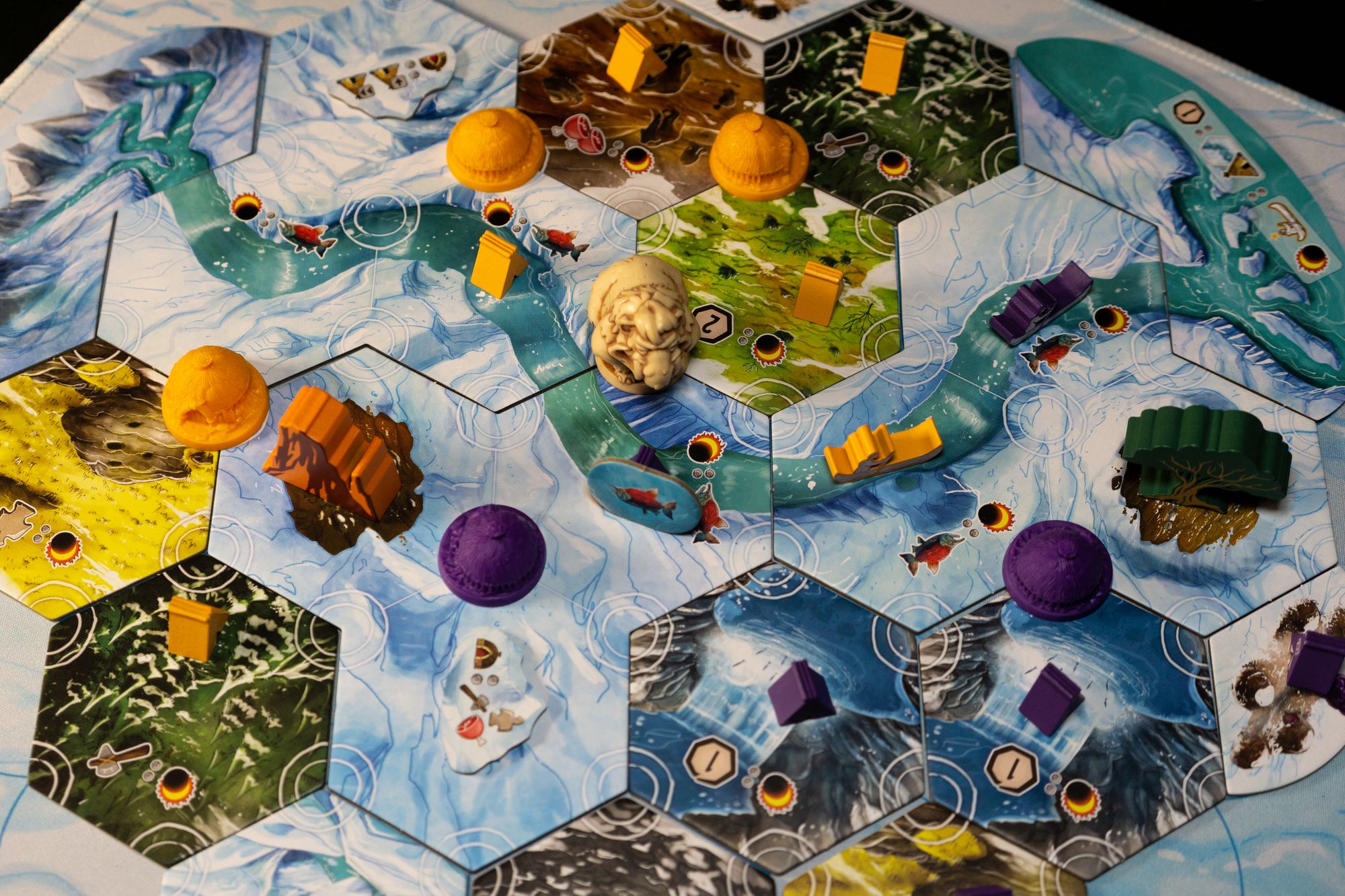
Rivers & Rafts expansion
The Rivers & Rafts expansion changes the area control portion of the game. Besides moving camps, you can also move your raft down or up the river. This can grant you fish tokens (which provide various bonuses), extra points, and help you construct villages. Landmarks are also a new addition that provides additional scoring opportunities when controlled.
The Rivers & Rafts is a good expansion that changes the game in a non-intrusive way providing new strategies and options. If you're more of an expert player like me, this adds a bit of extra crunch to the game. If your players are AP-prone, it's better to play without this expansion, which adds even more to consider. Verdict: Essential (most of the time)
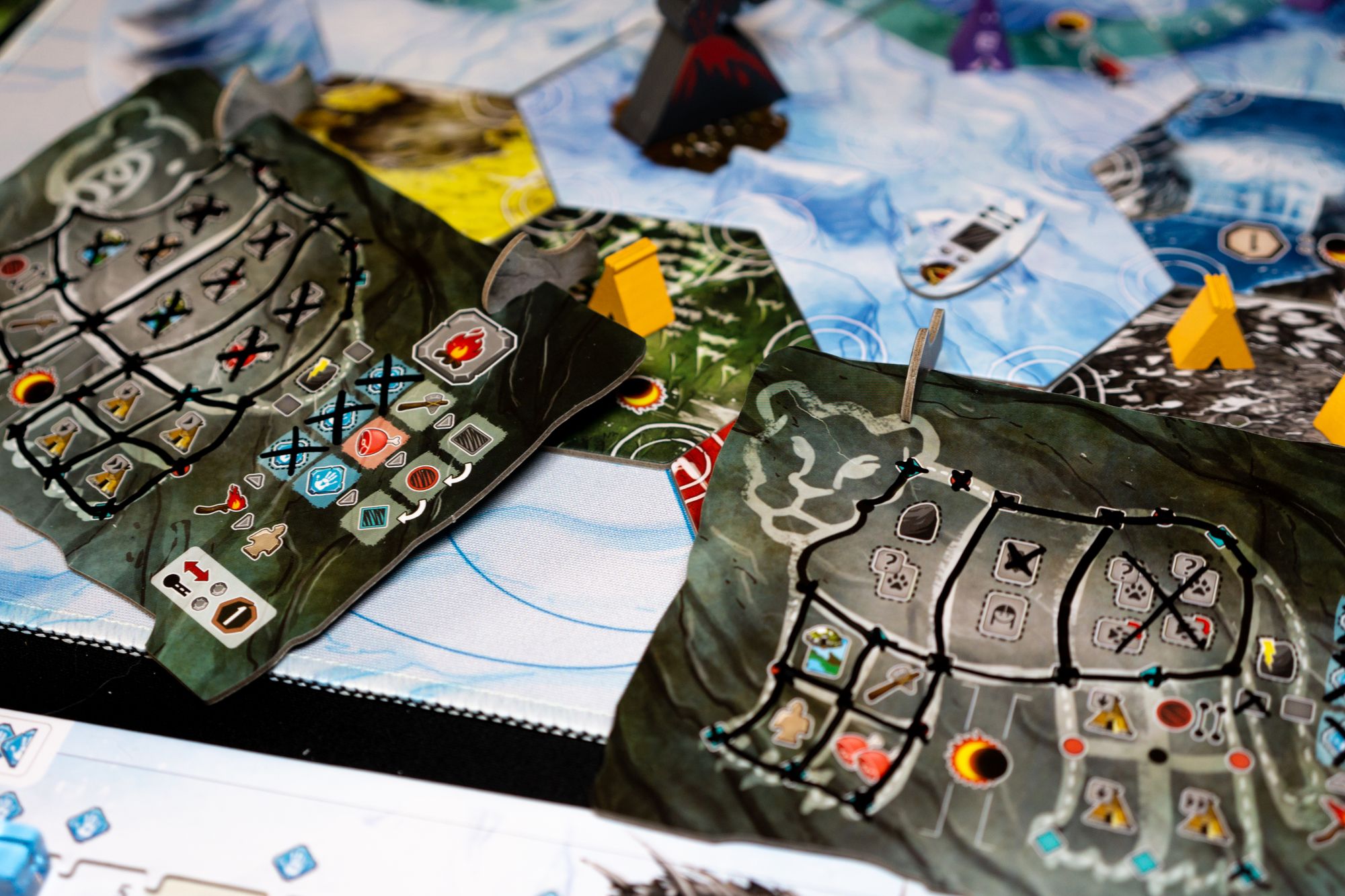
Cave Paintings expansion
The Cave Paintings expansion introduces a 5th action space focusing on a new player board where you'll draw cave paintings. You can unlock various one-time benefits and eclipse phase income by marking dots and lines. It also introduces multiple cards (animals, tribes, culture) that interact with this new game aspect.
Cave Paintings is probably the most intrusive expansion, as it adds a whole new area to the game. This pencil/draw mechanic is not something you expect in an involved game like Endless Winter, but it is executed well. It mixes nicely with the other game areas but also feels like a gimmick Verdict: Non-Essential.
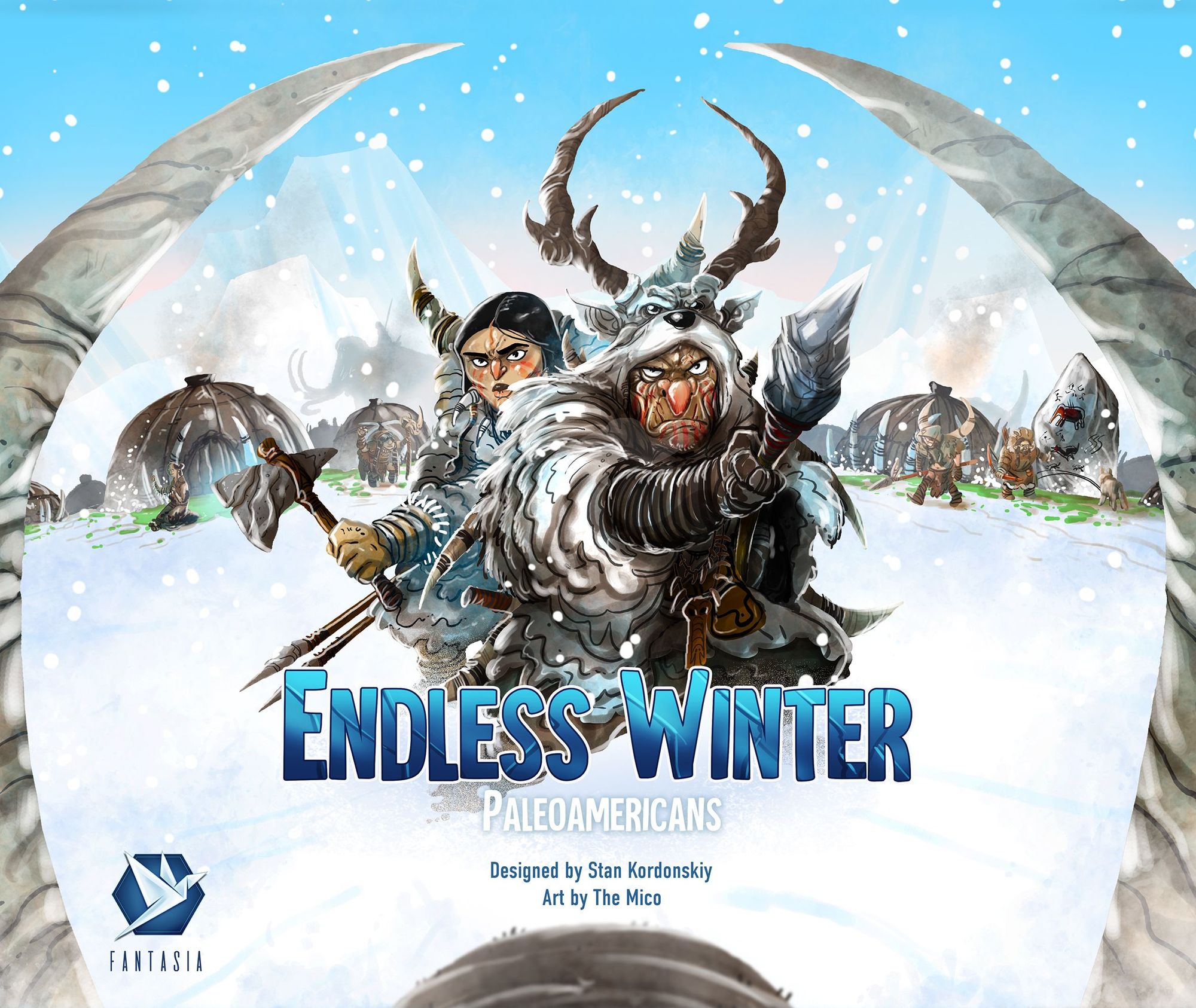
Endless Winter: Paleoamericans (2022)
In theory, Endless Winter should be the perfect game for me—excellent production with many intertwined mechanics and an epic theme. However, while I found many good things in this game, I also disliked some aspects, which is why I prefer to play other games.
Rating: ★★★★★★★☆☆☆ (7/10)
